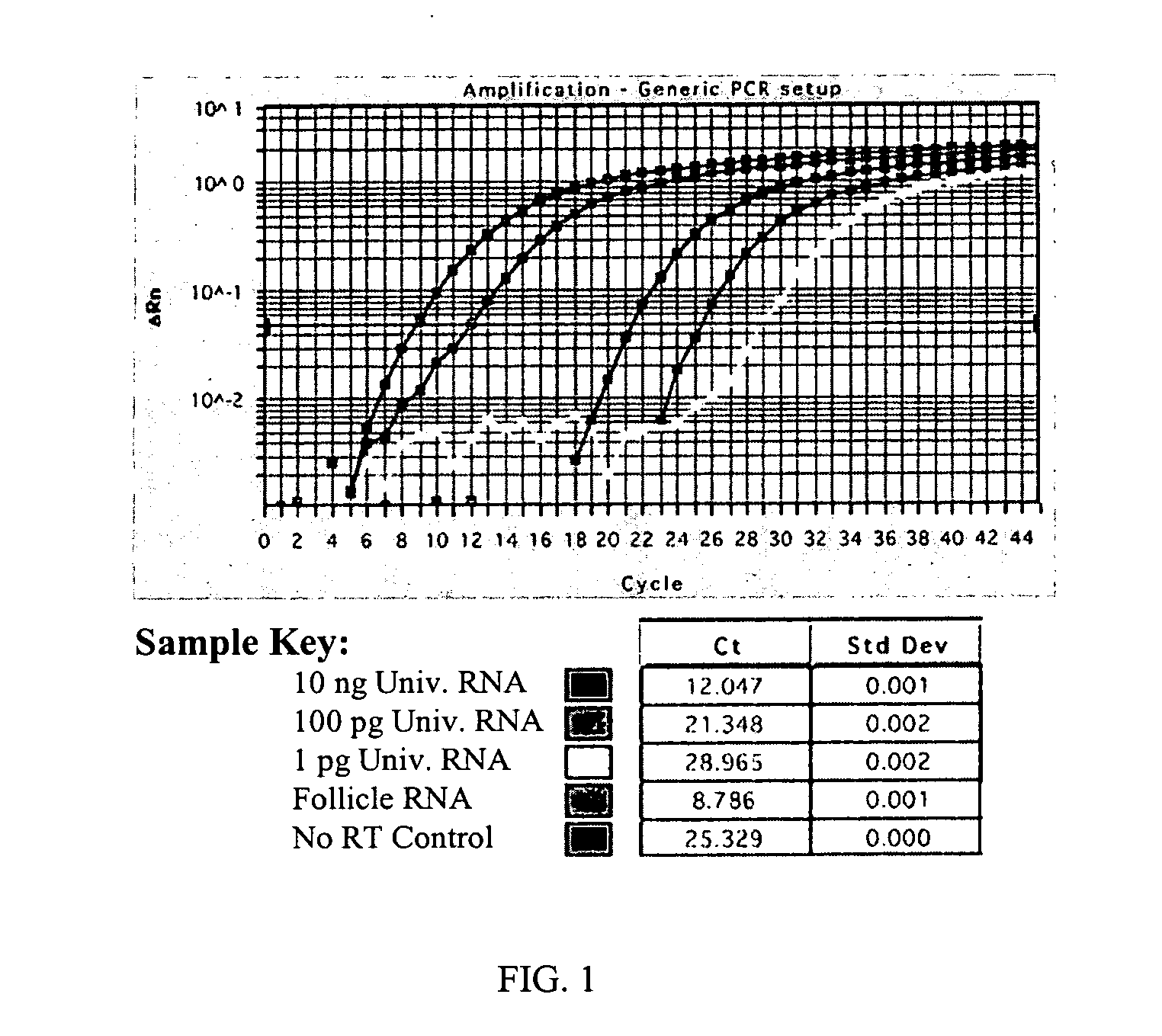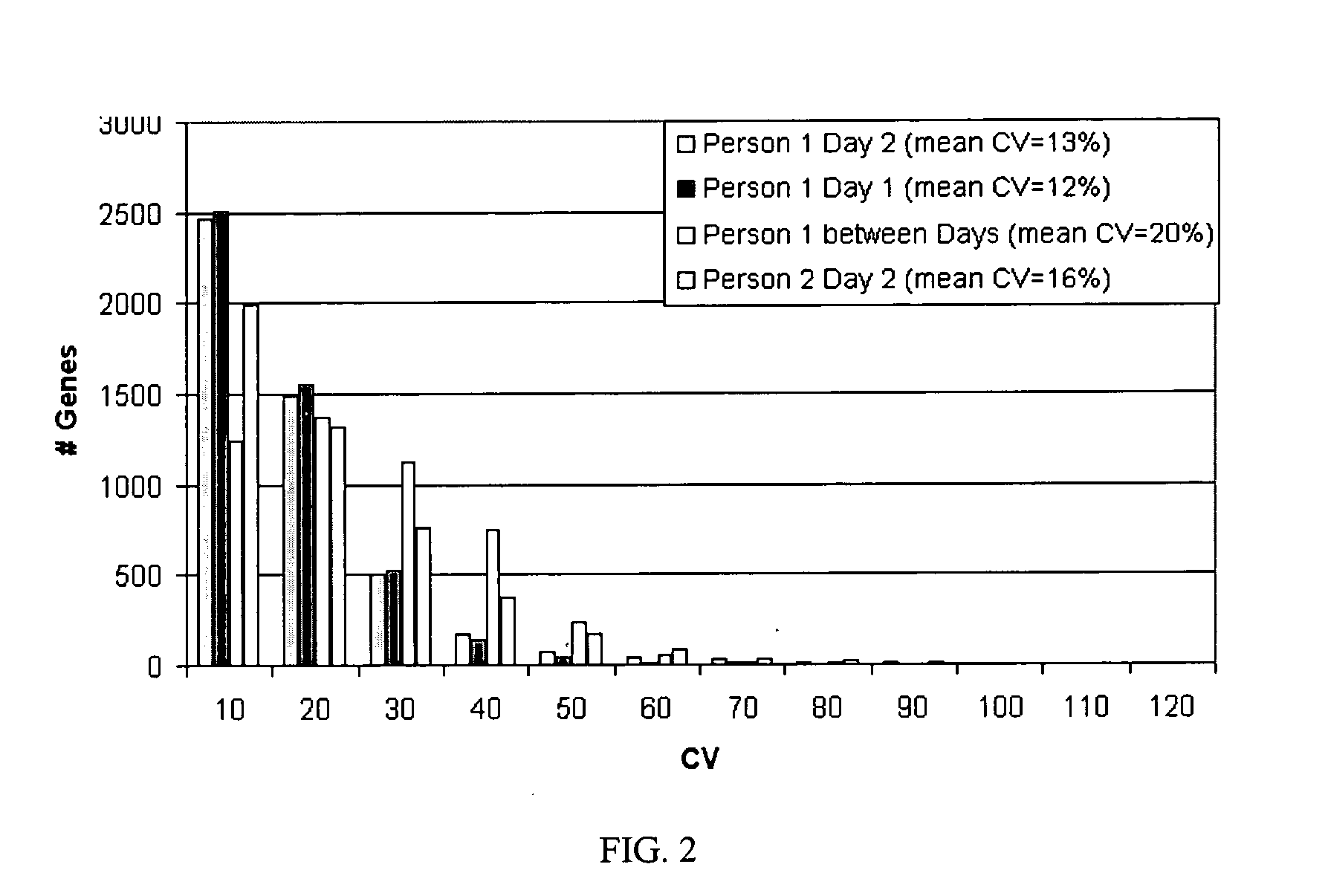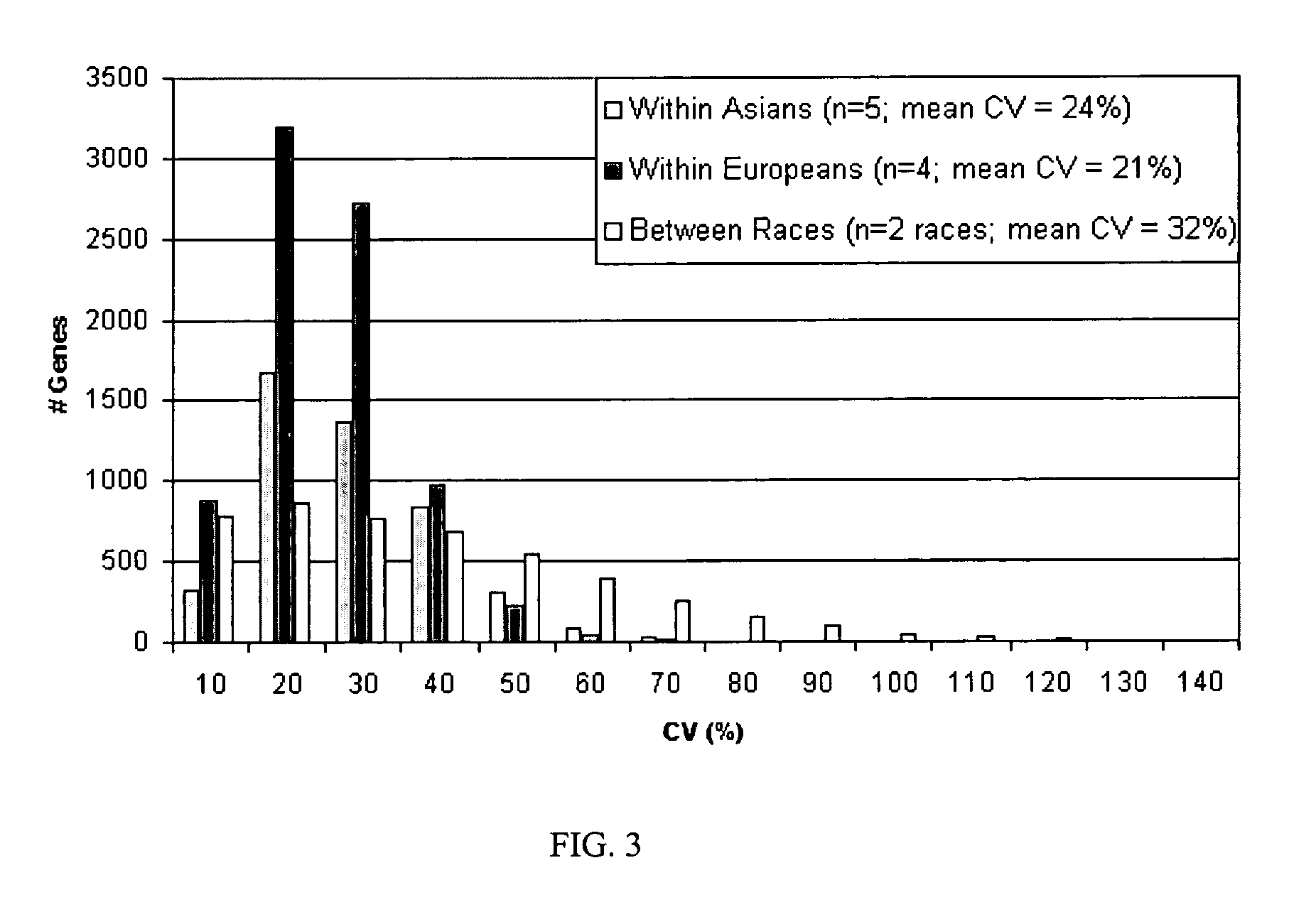Molecular analysis of hair follicles for disease
a gene expression and hair follicle technology, applied in the field of molecular biology, can solve the problems of invasive methods for obtaining tissue for gene expression analysis, affecting the survival of subjects undergoing such procedures, and affecting the safety of subjects undergoing such procedures, and reducing the risk of infection and death, skilled, medically trained personnel
- Summary
- Abstract
- Description
- Claims
- Application Information
AI Technical Summary
Benefits of technology
Problems solved by technology
Method used
Image
Examples
example 1
Isolation of RNA from Hair Follicles
[0131] The inventors have determined that RNA from hair follicles can be used to perform gene expression analysis, and have also established a method for the isolation of RNA from hair follicles. In this method, hair is plucked from the scalp with tweezers, and total RNA is prepared immediately on collected samples. In one experiment, 10 follicles were collected from a volunteer's scalp. The hair was trimmed and RNA was prepared using the Qiagen RNeasy Mini kit. The presence of a transcript was assessed by performing quantitative PCR on the 18S ribosomal housekeeping gene (FIG. 1).
[0132] Surprisingly, as shown by detection of the 18S ribosomal housekeeping gene in FIG. 1, genes can be detected using RNA from hair follicles. Amounts of material were assessed by quantitating yields of housekeeping gene in this material to a commercially available preparation of RNA (Universal RNA control, Stratagene). The approximate signal / follicle was equal to 1...
example 2
Gene Analysis of RNA from Hair Follicles Using Microarrays
[0137] In collaboration with Qiagen Operon, next-generation genome-scale oligo-based human and mouse arrays were developed. The arrays were produced using commercially available libraries of 70 base pair long DNA oligos such that length and sequence specificity are optimized, reducing or eliminating the cross-hybridization problems encountered with cDNA-based arrays. The human arrays used here have 21,329 human genes represented.
[0138] Oligo probes on these arrays were derived from the UniGene and RefSeq databases (www.ncbi.nlm.nih.gov). The RefSeq database represents an effort by the NCBI to create a true reference database of genomic information for all genes of known function. For the genes present in this database, information on gene function, chromosomal location, and reference naming are available; this allows one to perform functional analyses, to identify candidate genes in disease-gene investigations, and to compa...
example 3
Identification of Genes of Interest from Analysis of RNA from Hair Follicles
[0144] Genes of interest were identified using microarray gene expression analysis on hair follicle RNA obtained from healthy individuals. Using the OMRF 21,000+human gene microarray (described in Example 2), 12 genes whose expression significantly differed between Asians and Europeans were identified. Among them were genes that are known to affect hair physiology. For example, the vitamin D receptor transcript showed decreased expressed in Europeans. Point mutations in this gene reportedly produce generalized atrichia with papular lesions resulting in a failure of the first postnatal hair growth cycle. The ectodysplasin receptor was expressed in all Europeans but expressed in only one Asian. Point mutations in this gene result in a sparse hair disorder (autosomal hypohidrotic ectodermal dysplasia).
[0145] Next, the hypothesis that disease-related changes in gene expression can be identified by gene express...
PUM
| Property | Measurement | Unit |
|---|---|---|
| temperatures | aaaaa | aaaaa |
| temperatures | aaaaa | aaaaa |
| temperatures | aaaaa | aaaaa |
Abstract
Description
Claims
Application Information
 Login to View More
Login to View More - R&D
- Intellectual Property
- Life Sciences
- Materials
- Tech Scout
- Unparalleled Data Quality
- Higher Quality Content
- 60% Fewer Hallucinations
Browse by: Latest US Patents, China's latest patents, Technical Efficacy Thesaurus, Application Domain, Technology Topic, Popular Technical Reports.
© 2025 PatSnap. All rights reserved.Legal|Privacy policy|Modern Slavery Act Transparency Statement|Sitemap|About US| Contact US: help@patsnap.com



